I. Choose the flex of the floorball stick
II. Choose a correct blade
III. More advanced players should consider: shaft material, handling shape and shaft technology
I. Choose the flex of the floorball stick
The flex determinates a stick deflection when arms put pressure on the stick:
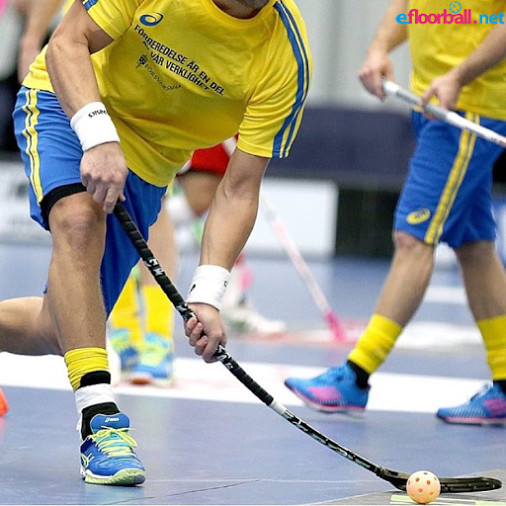
The flex is displayed as a numeric value of range from 23 to 36 mm. Generally a larger number means softer stick - easier to bend. There is a simply rule - the more you bend the stick during the shot, the more it kicks out and the shot is harder.
If the flex is chosen incorrectly, the stick will bent too little (the player is not able to shot smoothly) or too much (the stick will bent as a bow, but it will not make a hard shot).
So how to choose floorball flex correctly?
The flex choice depends on the power in arms (the player's weight can be misleading). Our recommendation is:
-
Children (6-12 years old) - flex 32mm - 35mm - there are no exceptions and all players in this category should use 32-35mm flex.
-
Teenagers (13-17 years old) - flex 29mm - 32mm - there might be some exceptions (but they are not so often)
-
Adults (18-?? years old) - flex 23mm - 29mm - strong players use the hardness of 23 mm to 26 mm, while the less strong players 27 mm to 29 mm.
According IFF rules there is a 2mm hardness tolerance. So when you buy the stick of the flex 26mm, it might actually be 24mm, but also 28mm flex. So a hardness difference between two sticks might be up to 4mm. It depends on the brand and on the technology used when producing the shaft.
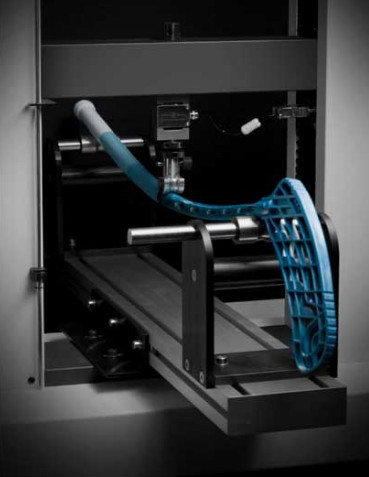
II. Choose a correct blade
Firstly we should choose:
- Shape
- Hardness
1.Shape
A blade shape comes from the concept of floorball brands - each models of blades are usually logically connected. We distinguish:
- Cavity blades and straight blades. It is easier to shoot with precurved blades, but on the other hand they are harder to control. It is necessary to consider the player's preferencies for using the blade.

- Rounded tip and dominant (sharp) tip blades. Some players cannot shoot without a sharp tip, on the other hand, some of the players dislike a sharp tip.
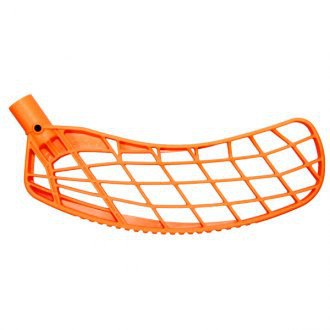
2.Blade hardness
The hardness of the blade is divided into: Soft, Medium and Hard. Harder blades are better for shooters, who don't want to bend the blade when shooting. Softer blades are more likely for technical players, who need to have a good feeling for the ball. Blade's hardness is affected by material, which is used for blade production.
Soft blade (Marking: SB, S, Soft, Touch)
Advantages
- doesn't rub on soft surfaces - e.g. rubber surface
- the ball doesn't bounce during first touch and shots
- suitable for sweep shots and technical players
Disadvantages
- it twists when you push down too hard on the shaft
Medium blade (Marking: MB, PE, M, Endurance, Medium)
Advantages
- doesn't twist when shooting or passing
- suitable for a technical players who use wrist shots
Disadvantages
- the ball might bounce, especially when the player doesn't have a good technical skills
- the blade rub a little bit more on a soft surface - e.g. rubber surface
Hard blade (Marking: HB, PE-h, Radical, Hard, BioPower)
Advantages
- doesn't twist when shooting or passing
- great for players who shoot from longer distances (e.g. defenseman)
Disadvantages
- the ball might bounce, especially when the player doesn't have a good technical skills
- the blade rub a lot on a soft surface - e.g. rubber surface
Summary
eFloorball do not recommend hard and medium hard blade to the beginners, kids and players who often play on the soft surface. Hard blades are great for strong players and those who like sweep and golf shots. And if you are something between, medium hard blade is a great choice for you!
III. Choose the shaft features:
When thinking about the shaft - we should consider:
- Material
- Shape
- Technology
1.Material
The sticks are made of three different basic materials:
- Glassfiber
- Composite
- Carbon
Glassfiber
Glassfiber is produced from glass and reinforced by a resin. The weight of the shaft is greater than 250g. These sticks are suitable for beginners and children (6-12 years old).
Advantages
- Relatively good durability
- Low price
Disadvantages
- The heaviest floorball shaft
Composite
The composite is a mix of carbon fiber and glassfiber. It is necessary to consider the particular ratio of carbon fiber and fiberglass. You should determine this ratio before buying sticks. The higher ratio of carbon fibre means the better stick properties. The weight of these sticks usually ranges between 220-250 grams. Ideal for intermediate players and those who do not like too light sticks.
Advantages
- Quite a good durability for an acceptable price
Disadvantages
- Medium weight of mentioned materials
Carbon
Competition sticks are produced from carbon (carbon fibers). Lately we could see a progress in the types of carbon fibers. Floorball brands introduced step by step to the market: NanoKarbon, Japanese carbon, TeXtreme and CarbonX. New types of carbon fibers are lighter, but some of them are also frailer. The weight of these sticks is between 170-220 grams. The shafts are ideal for advanced players and those who like to play with the ball, because the jinking and making tricks with light sticks are much easier!
Advantages
- lightness and full control over the stick
Disadvantages
- Higher price
- Fragility
Plastic shaft
Basic sticks usually bought for children. Plastic shafts have very high flex, therefore you cannot handle basic floorball skills, so we recommend sticks made of a different material.
Advantages
- Very low price
Disadvantages
- injuries
- relatively small durability
- slow teaching
Every player should consider the stick material, it is very important when choosing a floorball stick.
2. Handling shape
There are three handling shapes:
-
Round - the most common a used handling shape. You can feel a round profile of the stick when you hold it.
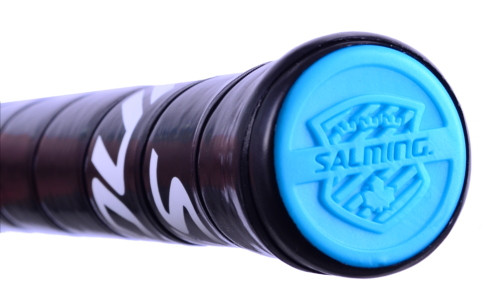
-
Oval - less used, but quite a comfortable handling shape, which fits into the hands perfectly. You can feel an oval profile of the stick when you hold it.
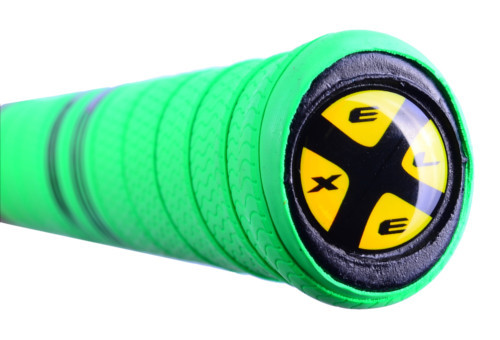
-
Square (Hockey) - even more less used than Oval handling shape. The shaft has the shape of a hockey stick. The disadvantage may be when you scroll stick the edges of the shaft are pushing into your palm.
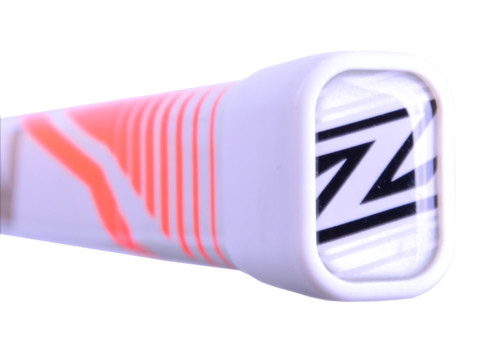
At the handgrip it is very important that stick doesn't creep and holds perfectly. If you are not satisfied for example with a round shape, we suggest you to try a different one.
3. Shaft Technology
The shaft technology is a higher level of the sticks which helps players to improve skills - e.g. it allows to gain better angle when shooting etc. You can find various types of the technologies on the market such as: Curve, KickZone, Ripple etc.
Let's have a look at different groups of floorball players:
Children - eFloorball don't recommend to use any shaft technology at all. Children should learn to play with a straight shafts. Furthermore, players at this age will not benefit from the technology (their main job in this age is to learn basic skills, not to try technologies), so it is useless.
Teenagers - we recommend to try some technology for youngsters who are more experienced. It might fit them and improve their performance.
Adults - It is very individual in this category. The players usually have their own habits. The off season time is good for making experiments - trying some technology and something new.
If you are still not sure of choosing an ideal stick for you, feel free to CONTACT US HERE or on our FACEBOOK and we will help you with the choice!










